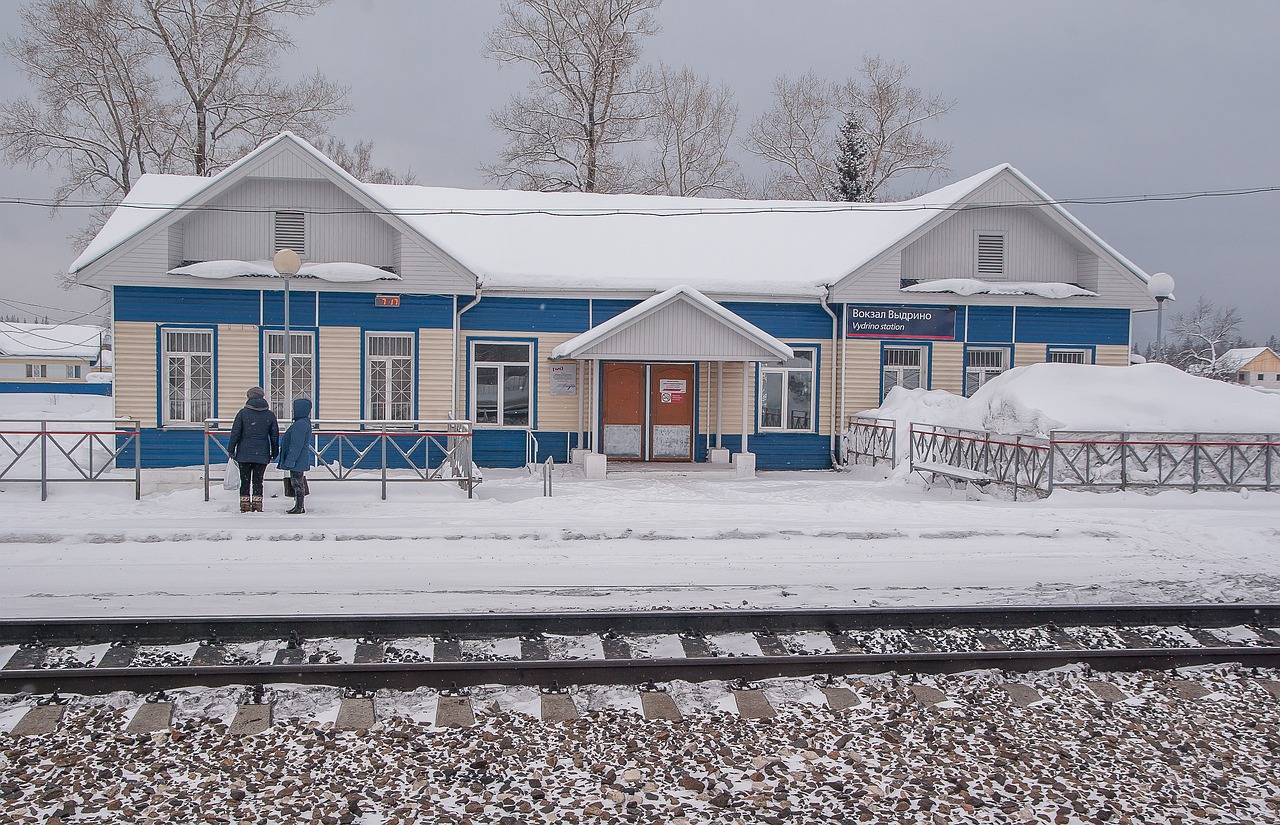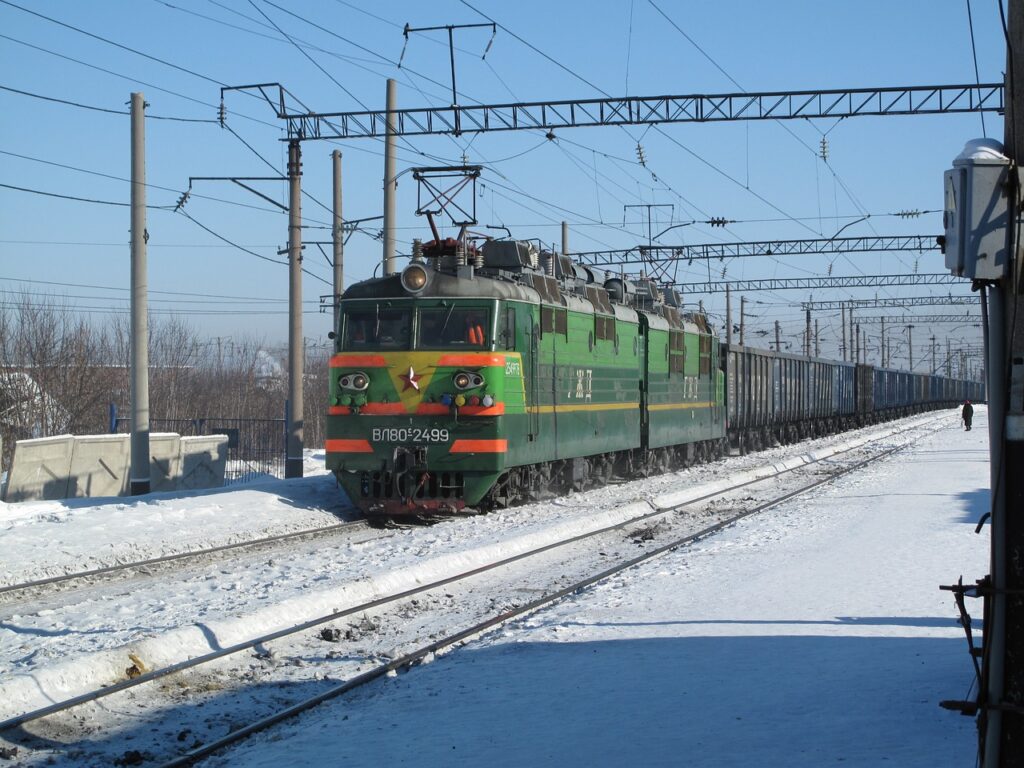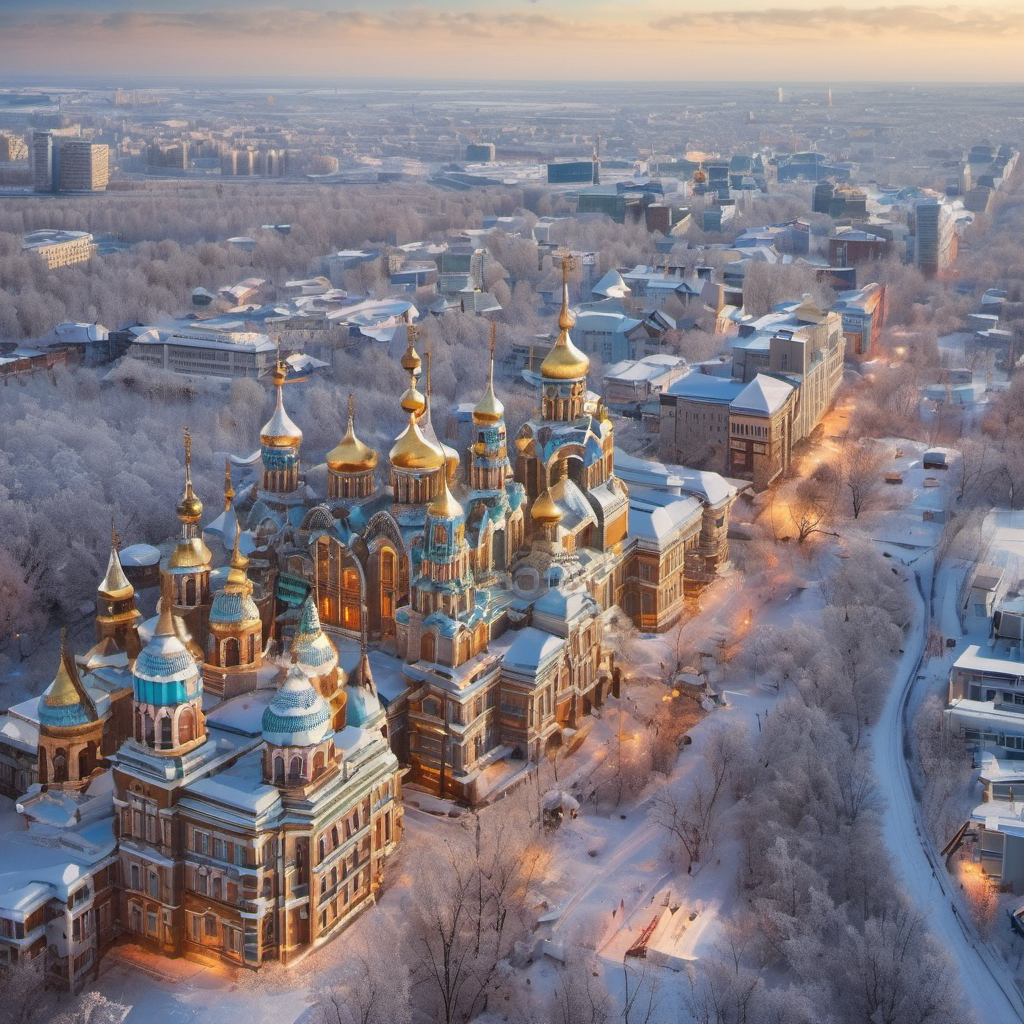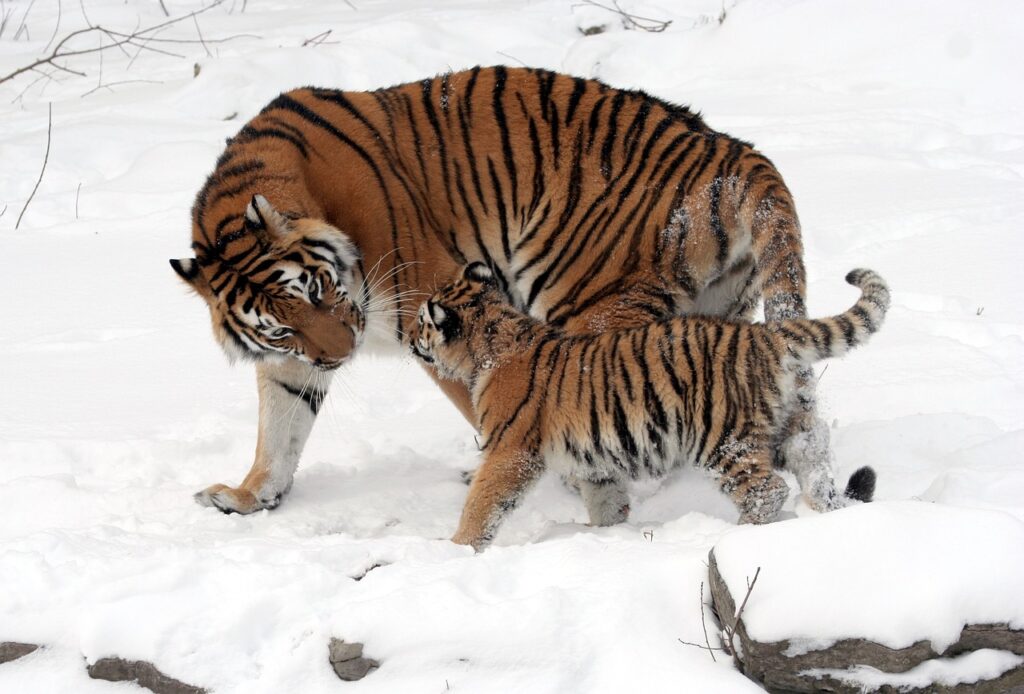
Riding the Rails: Trans-Siberian Adventure:
Are you ready for the ultimate rail journey that spans over two continents and eight time zones? Buckle up for the Trans-Siberian Railway adventure—a trip that promises not just a change of scenery but a transformation in your very perception of travel. Whether you’re a solo traveler, a couple seeking romance, or a family in search of an unforgettable journey, the Trans-Siberian Railway offers something for everyone. In this guide, we’ll delve into everything from the rich history of the railway to practical travel tips and awareness, ensuring your journey is as epic as the landscapes you’ll traverse.
Why Choose the Trans-Siberian Railway?
Why pick Siberian, you ask? Well, if the allure of crossing the world’s largest country on a train isn’t compelling enough, consider this: the Trans-Siberian Railway offers an unparalleled way to immerse in the diverse cultures, breathtaking sceneries, and historical grandeur of Russia. From the mystical Lake Baikal to the bustling streets of Moscow, this train ride is your ticket to an extraordinary exploration of the vast Russian Expanse.

History of the Trans-Siberian Railway:
Initiated in the late 19th century under the reign of Tsar Alexander III, the Trans-Siberian Railway was a monumental endeavor aimed at connecting the Russian capital with the Pacific Ocean. Completed in 1916, this engineering marvel is not just a functional railway but a symbol of innovation and determination. As you glide along the tracks, you’re literally traveling along a route that has been integral to Russia’s history for over a century.
Adventure and Activities: Exploring the Heart of Siberia:
The real adventure begins when you step aboard. Whether it’s watching the Siberian landscape change from lush greenery to arid steppes, or hopping off to explore a remote village or bustling city, every day brings something new. Here are some top activities:
- Explore the Great Outdoors: Venture into the depths of Siberia’s forests for a hiking or wildlife spotting tour. Don’t miss the chance to visit the iconic Lake Baikal, where you can even go for a chilly but invigorating swim.
- City Tours: Make stops in major cities like Moscow, Vladivostok, and Novosibirsk. Each city offers unique attractions, from the Kremlin and Red Square in Moscow to the impressive bridges and harbors of Vladivostok.
Siberia, a land of breathtaking landscapes and rugged wilderness, offers endless opportunities for adventure and exploration. Here, the spirit of adventure is not just about traversing vast distances but about embracing a journey that challenges the body and enriches the soul. Whether you’re a thrill-seeker or a nature lover, the activities and adventures awaiting in Siberia are as diverse as the landscape itself.
Winter Sports and Activities:
Siberia’s harsh winters are a playground for winter sports enthusiasts. The thick snow and vast open spaces are perfect for:
- Dog Sledding: Experience the traditional mode of Siberian transport. Guided tours are available, where you can mush your own team of dogs across the frozen tundra, feeling the exhilaration of gliding over snow with only the sound of sled runners and panting dogs breaking the silence.
- Ice Fishing: Try your hand at ice fishing on one of Siberia’s many frozen lakes. It’s not just about catching fish; it’s about experiencing the serene, icy stillness of a Siberian winter.
Trekking and Hiking:
As the snow melts and the vast landscape of Siberia reveals itself, the region becomes a hiker’s paradise:
- Hiking in the Taiga: The Siberian taiga is the largest forest on Earth, offering challenging treks through dense woods and an opportunity to see wildlife in its natural habitat, including deer, sable, and even bears.
- Mountain Climbing: For those who seek a vertical challenge, the mountains of Siberia offer several peaks, especially in the Altai and Sayan ranges, which provide both beginner and advanced climbs.
Cultural Exploration:
Siberia is not just about natural beauty; it’s also rich in cultural history:
- Visit Indigenous Communities: Participate in cultural tours that introduce you to the traditions and lifestyles of Siberia’s indigenous peoples, such as the Buryats and the Nenets. These experiences often include traditional music, dance, and food.
- Trans-Siberian Railway: For a less strenuous but equally enriching experience, take a ride on the Trans-Siberian Railway. This iconic train journey offers a unique way to see large swathes of Siberia, with the option to stop at various towns and cities along the way to explore local attractions.
Wildlife Watching:
Siberia’s diverse ecosystems are home to some of the planet’s most fascinating wildlife:
- Bird Watching: The region is a haven for bird watchers, with the vast Siberian wetlands attracting thousands of migratory birds each year.
- Big Game Viewing: For a truly unique experience, go on a guided wildlife tour to spot some of Siberia’s larger inhabitants, such as the rare Amur leopard and the majestic Siberian tiger.
Adventure Sports:
For those looking for adrenaline-pumping activities, Siberia offers several options:
- Whitewater Rafting: The powerful rivers of Siberia, swollen by melting snow from the mountains, are ideal for rafting. The Altai region, with its rapid-filled rivers, is particularly popular among rafting enthusiasts.
- Paragliding: Take to the skies and experience Siberia from a bird’s-eye view. Paragliding over the vast Siberian landscape provides not only thrilling excitement but also unparalleled views of this incredible region.
Embracing the Siberian Adventure:
Each of these activities offers a way to connect with the rugged, pristine nature of Siberia. Whether it’s the silence of a snowy landscape, the challenge of a mountain climb, or the cultural richness of its people, Siberia promises adventures that are not just about physical exertion but about finding a connection to the earth and its history. The real adventure lies in stepping outside the ordinary and embracing the extraordinary experiences that Siberia has to offer.

Cuisine and Best Restaurants: A Taste of Siberia:
Dining on the Trans-Siberian isn’t just about sustenance; it’s about experiencing the local flavors that define the regions along the route. Here’s what not to miss:
- Onboard Dining: Enjoy the unique experience of dining in the train’s restaurant car. The borscht and pelmeni are must-try dishes.
- Local Delicacies: Sample Siberian specialties in local restaurants. In Irkutsk, close to Lake Baikal, try the omul fish—a local delicacy best enjoyed smoked.
Siberia, with its vast and varied landscape, offers a culinary journey as profound and adventurous as its geography. The region’s cuisine reflects its rich history, diverse cultures, and the resilient adaptability of its people to the harsh climate. Here, traditional dishes are not just food but a narrative of survival, celebration, and community. Let’s explore some of the distinctive flavors and culinary highlights that Siberia has to offer, along with recommendations for some of the best restaurants where these tastes can be savored.
Traditional Siberian Cuisine:
Siberian food is hearty, designed to provide warmth and energy through cold weather. Staple ingredients include fish, game, and root vegetables, with techniques that emphasize preservation such as smoking and pickling.
- Pelmeni: These are Siberian dumplings, traditionally filled with minced meat (beef, pork, or lamb), onion, and spices. They are boiled and often served with a dollop of sour cream or butter. They are not just comfort food but also a festive dish, often made in large quantities and shared among family and friends.
- Stroganina: A dish for the truly adventurous eater, stroganina consists of thin shavings of raw, frozen fish or meat, typically seasoned with salt and pepper and sometimes served with a splash of vinegar or lemon juice. It’s a delicacy in the Arctic areas of Siberia.
- Borscht: While not exclusive to Siberia, this beet soup is a staple across Russia. In Siberia, it’s made heartier to suit the climate, often containing beef, pork, or even deer meat, and served with a generous spoonful of sour cream.

Best Restaurants to Experience Siberian Cuisine:
Siberia’s vastness means there are culinary gems scattered across the region, each offering a unique taste of local flavors.
- Kolchak (Novosibirsk): Named after the famed Admiral Kolchak, this restaurant offers a modern take on traditional Russian and specifically Siberian cuisine. Their pelmeni and wild game dishes are particularly renowned.
- Last Century (Irkutsk): Perfect for history buffs, this restaurant is themed around the 20th century and serves traditional Siberian dishes with a twist. Their stroganina and omul fish dishes are must-tries.
- Venskoye Cafe (Vladivostok): While technically not in Siberia, Vladivostok’s proximity and its role as the endpoint of the Trans-Siberian Railway make it a significant culinary stop. This cafe offers a fantastic selection of Siberian dishes with spectacular views of the Amur Bay.
Modern Twists and International Cuisine:
While traditional dishes form the backbone of Siberian cuisine, the region is not isolated from global influences. Modern Siberian chefs are integrating international culinary techniques with local ingredients, creating innovative fusion dishes.
- Chemodan (Krasnoyarsk): An upscale restaurant that is part of a more extensive Russian chain, Chemodan offers a sophisticated environment in which to enjoy gourmet Siberian cuisine. They are known for their creative use of local ingredients like venison and Baikal fish.
- Rassolnik (Omsk): This restaurant offers a cozy, homelike atmosphere and is famous for its excellent Siberian soups and stews, which incorporate a modern culinary approach to traditional recipes.
Street Food and Local Eats:
For those looking to experience Siberian food in a more casual setting, the street food and local markets offer authentic and delicious options:
- Central Market (Novosibirsk): Here, you can find vendors selling everything from smoked Baikal omul to fresh, handmade pelmeni. It’s an excellent place for food lovers looking to explore the local flavors without the formality of a sit-down restaurant.
- Seasonal Festivals: Attending a local festival can provide a deeper insight into Siberian cuisine. These events often feature traditional food stalls where one can sample various regional specialties.
Culinary Journey Through Siberia:
Siberia offers a culinary landscape as challenging and rewarding as its physical one. From hearty traditional dishes that have warmed generations to modern restaurants redefining what Siberian cuisine can be, the region offers a feast for the senses. Whether you’re sitting down in a refined restaurant or grabbing a bite at a bustling local market, the flavors of Siberia promise to leave a lasting impression on your palate.
Adventures for Families and Couples in Siberia:
The train journey is perfect for creating lasting memories, whether you’re traveling with family or as a couple:
- Family Bonding: For families, there’s plenty of room to play games, share stories, and even educate the kids with fun geography and history lessons along the way.
- Romantic Retreats: Couples can enjoy the privacy of their cabin or watch mesmerizing sunsets from the train’s windows, creating a perfect backdrop for a romantic journey.Siberia, a land renowned for its rugged landscapes and vast wilderness, offers a multitude of activities that cater uniquely to both families and couples. Whether it’s embarking on a thrilling outdoor adventure or enjoying a serene escape into nature, Siberia presents an ideal backdrop for making lasting memories.
Family Adventures in Siberia:
Families visiting Siberia have a wealth of opportunities to explore together, learn, and bond in ways that are both educational and entertaining.
- Wildlife Safaris: Siberia is home to some unique wildlife, not seen in many other parts of the world. Families can take guided wildlife tours to see the majestic Siberian tiger or the elusive snow leopard. These safaris are not only exciting but also educational, offering children and adults alike a chance to learn about wildlife conservation.
- Ethnographic Museums: The rich cultural heritage of Siberia is showcased in various ethnographic museums across the region, such as the Taltsy Museum near Irkutsk. These museums often have interactive exhibits that engage children and provide families with insights into the indigenous cultures of Siberia.
- Sled Dog Adventures: In the colder months, families can enjoy dog sledding experiences, where they can learn to mush their own sleds. This thrilling experience is often a highlight for kids and provides a fun way to explore the snowy landscapes.
- Baikal Nature Reserve: Visiting this area provides families with numerous activities, from hiking and picnicking in the summer to ice-skating and snowmobiling in the winter. The clear, icy surface of Lake Baikal, particularly in winter, is a phenomenal natural playground for families.
Romantic Escapes for Couples:
For couples, Siberia offers the magic of its vast landscapes and quiet, untouched nature, creating a perfect setting for romantic adventures and moments of connection.
- Trans-Siberian Railway Journey: Considered one of the most romantic journeys in the world, traveling by train across Siberia can be a memorable experience for couples. With the landscape changing dramatically outside your window, couples can enjoy the solitude and intimacy of their private cabin.
- Stargazing by Lake Baikal: The remote locations around Lake Baikal offer some of the clearest skies for stargazing. Couples can enjoy a quiet evening by the lake, perhaps even catching the elusive Aurora Borealis, creating a truly magical and romantic setting.
- Hot Springs of Kamchatka: For a more relaxing retreat, couples can visit the hot springs of Kamchatka. The natural thermal waters surrounded by snow and ice offer a unique spa experience in the heart of nature.
- Cabin Stays in the Taiga: Renting a remote cabin in the Siberian Taiga can be the ultimate romantic getaway. Couples can enjoy the solitude and beauty of the snowy forest, cozy up by the fire, and disconnect from the outside world.
Tips for Enjoying Siberian Adventures:
- Dress Appropriately: The weather in Siberia can be extreme. Families and couples should prepare with appropriate clothing to enjoy the activities comfortably and safely.
- Respect Nature: Siberia’s ecosystems are pristine and often delicate. Visitors should be mindful of their environmental impact and respect wildlife habitats.
- Plan Ahead: Some activities, especially in remote areas, need to be booked in advance. It’s also important to check the accessibility and travel requirements for certain locations.
Whether it’s the thrill of adventure or the peace of nature you seek, Siberia offers an expansive playground for families and a romantic backdrop for couples. With activities ranging from cultural immersions to physical explorations, this vast region invites all who visit to create moments of joy and connection.
Trending and the Ultimate Best Places to Visit in Siberia:
Stay updated with the trending destinations along the Trans-Siberian route:
Siberia, often imagined as a remote and icy wilderness, is increasingly capturing the imagination of travelers who seek its untouched beauty and unique cultural experiences. From stunning natural wonders to vibrant cities, Siberia offers a range of destinations that cater to different interests and are trending as must-visit places. Here are some of the top picks for the ultimate best places to visit in Siberia, combining both trending spots and timeless attractions.
Trending Destinations:
- Vladivostok: Once a closed city, Vladivostok has transformed into a dynamic hub of culture and commerce. Its position as the terminus of the Trans-Siberian Railway makes it a fitting culmination of any Siberian journey. The city’s waterfront promenade, the Golden Horn Bay Bridge, and its proximity to the stunning Russky Island are major draws for visitors looking for both urban and natural explorations.
- Krasnoyarsk: Known for the striking beauty of the nearby Stolby Nature Reserve, Krasnoyarsk is gaining popularity for outdoor activities such as hiking and rock climbing. The city itself offers a vibrant arts scene and bustling markets that showcase the best of local Siberian crafts and foods.
- Novosibirsk: As Siberia’s largest city, Novosibirsk is trending not just for its size but for its cultural institutions like the Novosibirsk Opera and Ballet Theatre, which is the largest opera house in Russia. The city’s zoo and the nearby Ob River offer additional attractions for families and solo travelers alike.
Ultimate Best Places to Visit:
- Lake Baikal: Often considered the highlight of any Siberian journey, Lake Baikal is the deepest and oldest freshwater lake in the world. Its crystal-clear waters and surrounding mountains offer breathtaking views and unparalleled hiking opportunities. In winter, the lake freezes over, creating a mesmerizing landscape of clear blue ice that’s ideal for ice skating, snowmobiling, or simply marveling at nature’s beauty.
- Altai Mountains: For those who seek a blend of adventure and spirituality, the Altai Mountains are a must-visit. This region is known for its stunning landscapes that include lush valleys, clear lakes, and high peaks. It is also a cultural and spiritual center for many indigenous peoples of Siberia, offering travelers insights into local traditions and ancient shamanistic practices.
- The Lena Pillars: Located along the banks of the Lena River, the Lena Pillars are a natural rock formation that rises dramatically from the riverbanks. This UNESCO World Heritage site is not only geologically impressive but also provides a scenic backdrop for boat trips and photography.
- Tyumen: For those interested in Siberian history and the development of the Russian frontier, Tyumen offers a rich history as the oldest Russian settlement in Siberia. The city features numerous historical buildings, museums, and it serves as a gateway to northern Siberian adventures.
- Yakutsk: Known for being one of the coldest cities on earth, Yakutsk offers a unique experience to see life in extreme conditions. The Permafrost Kingdom, an underground ice cave museum, showcases ice sculptures and provides a literal cool down from the summer heat. The city is also a center for the study of cryogenic resources and a starting point for journeys into the remote and mysterious regions of the Far North.
Tips for Visiting:
- Timing is Key: The vast difference between seasons in Siberia means that the best time to visit depends heavily on the type of activities you’re interested in. Winter offers snowy adventures, while summer provides easier travel conditions and access to the region’s extensive natural beauty.
- Local Guidance: Especially in the more remote or culturally unique areas, hiring local guides can enhance your experience and provide deeper insights into the places you visit.
- Prepare for the Unexpected: Traveling in Siberia can sometimes bring surprises, from sudden weather changes to logistical adjustments. A flexible attitude and adequate preparation can make these experiences part of the adventure.
Trending as a frontier for those who seek the less-traveled path, Siberia offers a diverse array of experiences that go far beyond the stereotypes of endless snow and isolation. From the cultural richness of its cities to the natural splendor of its landscapes, Siberia holds a treasure trove of experiences waiting to be discovered by intrepid travelers and curious explorers alike.
Transportation and Travel Tips for Navigating Siberia:
Navigating the Trans-Siberian Railway is an adventure in itself. Here are some tips to keep your journey smooth:
Siberia’s vast and varied landscapes present unique challenges and opportunities when it comes to transportation. While the region’s sheer size and remote areas can make travel daunting, understanding the available transportation options and planning ahead can greatly enhance your travel experience. Here are essential tips and insights on navigating Siberia, ensuring a smoother and more enjoyable journey.
Key Transportation Options:
- Trans-Siberian Railway: The backbone of travel in Siberia, the Trans-Siberian Railway stretches over 9,289 kilometers from Moscow to Vladivostok and offers several branch lines to other parts of Asia. It’s not only a practical mode of transport but an adventure in itself, providing a unique way to see vast swathes of the country. Consider buying tickets in advance, especially for first-class or second-class sleepers, to ensure comfort during the long journey.
- Domestic Flights: For long distances or to reach more remote areas quickly, flying is a practical option. Major cities like Novosibirsk, Omsk, and Irkutsk have airports with flights connecting to Moscow and other significant Russian cities. Smaller regional airlines can take you to more isolated areas, although it’s advisable to book these flights well in advance due to limited availability.
- Road Travel: Road conditions vary greatly across Siberia. Major cities are connected by well-maintained roads, but rural or remote areas may have roads that are rough or impassable, especially in winter. Renting a car provides flexibility but driving in Siberia requires preparation and caution, particularly for those unfamiliar with driving in such challenging conditions.
- River Transport: Siberia’s major rivers, like the Ob, Yenisei, and Lena, are vital transportation routes, especially in areas where roads are less developed. River cruises and ferries can be a scenic way to travel between cities or explore remote regions during the warmer months.
Travel Tips for Siberia:
- Prepare for the Climate: Siberian weather can be extreme, with harsh winters and surprisingly warm summers. Packing appropriate clothing and gear is essential, including layers for cold weather, sturdy boots, and sun protection for the summer months.
- Understand the Vast Distances: Distances in Siberia are massive, and travel times can be much longer than expected. Always allow extra time for travel, whether you’re on the road or relying on public transport.
- Language Barrier: English is not widely spoken outside the major cities or tourist spots, so learning some basic Russian phrases, or having a translation app ready, can be extremely helpful.
- Stay Connected: While major cities have good connectivity, remote areas may not have reliable mobile service or internet. Plan accordingly, especially if you need to stay in touch or require navigation aids.
- Health and Safety: Travel insurance is strongly recommended. Additionally, some parts of Siberia are remote and far from medical facilities, so carrying a basic first aid kit and necessary medications is wise.
- Local Laws and Customs: Familiarize yourself with local laws and customs, especially if you’re venturing into indigenous areas or protected natural sites. Respect for local culture and nature will enrich your experience and ensure that your presence is positive for host communities.
- Emergency Preparations: Given Siberia’s remoteness, having an emergency plan is crucial. This includes knowing emergency contacts, having a physical map, and informing someone of your travel itinerary.
Traveling through Siberia offers an opportunity to explore one of the world’s last great wilderness areas. With the right preparation, including understanding the best transportation options and equipping yourself with practical travel tips, your Siberian journey can be a memorable adventure filled with breathtaking landscapes and rich cultural experiences.
Travel Awareness in Siberia: Navigating with Care and Consideration:
Travel smart with these additional tips:
Traveling through Siberia, with its vast territories and harsh climates, requires not only an adventurous spirit but also a heightened sense of awareness. Being conscious of environmental impacts, cultural sensitivities, and safety concerns can greatly enhance your travel experience while ensuring that you contribute positively to the regions you visit. Here’s a deeper dive into important aspects of travel awareness when exploring Siberia.
Environmental Awareness:
Siberia is home to some of the world’s most pristine and untouched natural environments, from the vast taiga forests to the deep waters of Lake Baikal. As travelers, it’s crucial to minimize our environmental footprint:
- Leave No Trace: Practice leave-no-trace principles by carrying out everything you bring in, disposing of waste properly, and leaving sites as you found them.
- Sensitive Ecosystems: Be aware of your impact in sensitive areas, especially around endangered species and near delicate ecosystems like Lake Baikal.
- Wildlife Interactions: Maintain a respectful distance from wildlife, and avoid feeding or disturbing animals, which can alter their natural behaviors and endanger them.
Cultural Sensitivity:
Siberia is not just a geographical concept but a tapestry of diverse cultures and peoples, including several indigenous groups:
- Respect Local Traditions: Learn about and respect the traditions and practices of local communities. This could include dressing appropriately, participating respectfully in local festivals, and adhering to community norms.
- Support Local Economies: Where possible, support local businesses by purchasing local products, dining at local restaurants, and using local services. This helps ensure that your economic impact benefits the community directly.
- Language and Communication: Making an effort to learn basic Russian phrases, or even phrases in the local languages of indigenous communities, can go a long way in showing respect and enhancing interactions.
Health and Safety Awareness:
The remote and rugged nature of Siberia can pose unique health and safety challenges:
- Preparation for Remote Areas: Many parts of Siberia are remote and lack immediate access to medical facilities. Travel with a comprehensive first-aid kit, know basic first aid procedures, and consider satellite communication options if venturing into particularly isolated areas.
- Weather Preparedness: Siberian weather can be extreme. Prepare for sudden changes in weather, particularly if you’re engaging in outdoor activities like hiking or camping. Hypothermia and frostbite are real risks in the colder months, while summers can bring heatwaves and biting insects.
- Travel Insurance: Ensure you have robust travel insurance that covers medical evacuation, as transportation out of remote areas can be prohibitively expensive in an emergency.
Legal and Ethical Considerations:
Being aware of legal restrictions and ethical considerations is key to a trouble-free journey:
- Visa and Permit Requirements: Make sure you have the correct visa and any necessary permits, especially if visiting protected areas or conducting any type of research.
- Photography Rules: Be mindful of photography rules, particularly in sensitive or restricted areas, or when taking photos of people. Always ask for permission when photographing individuals.
- Wildlife Laws: Familiarize yourself with regulations regarding wildlife interactions, including rules against the collection of natural objects or engagement with wildlife.
Traveling in Siberia offers a unique opportunity to explore some of the most remote and beautiful parts of the world. By maintaining a high level of travel awareness, you not only ensure your own safety and enjoyment but also help preserve the natural and cultural integrity of this magnificent region. Approach your journey with respect, preparation, and a conscientious attitude to fully embrace the wonders of Siberia while contributing positively to its preservation.
A Little Back Story about Siberian :
The Legend of the Siberian Tiger and the Lost Village:
In the vast and mystical expanse of Siberia, where the land stretches under the endless sky and the air whispers with tales of yore, there existed a village so small it never found a place on any map. Nestled on the edge of a dense forest and bordered by the gentle flow of the Lena River, this village was home to a hardy group of people who had adapted to the challenges of the Siberian wilds.
The villagers lived in harmony with nature, but they were particularly respectful of one majestic creature—the Siberian tiger. They called it Amba, the guardian of the forest. Legends had been passed down through generations that the tigers were the protectors of the Siberian wilderness and, in return, the villagers must protect the tigers from harm.
One bitterly cold winter, when the snow lay thick upon the ground and the stars sparkled like shards of ice in the night sky, the village faced a dire crisis.

Food supplies were dwindling, and the harsh weather prevented any hunting expeditions. Desperation loomed over the village as the cold gnawed at their spirits.
During this bleak time, an old woman named Anya, who was revered as the village’s sage, had a vivid dream. A magnificent Siberian tiger, with fur as white as the snow and eyes as blue as the icy river, appeared to her. The tiger spoke in a voice that rumbled like thunder through the frozen valleys.
“Anya,” it said, “you have lived in harmony with our kind and the land. But now your village faces great peril. I will help you, but remember, the balance of give and take must always be preserved.”
When Anya awoke, she found a trail of large paw prints outside her small wooden home. She urged the villagers to follow the tracks, which led deep into the forest. The journey was perilous; the snow was deep, and the cold was relentless. But the villagers trusted in Anya’s wisdom and followed the mysterious tracks.
After hours of trudging through the snowy forest, the tracks led them to a clearing they had never seen before. In the center of this clearing was a cave, and outside it, lying calmly and watching them with piercing blue eyes, was the white Siberian tiger from Anya’s dream.
The villagers approached cautiously, but the tiger made no move to attack. Instead, it rose and walked into the cave. Compelled by a mix of fear and fascination, the villagers followed. Inside, they found the cave was not just a cave but a passage leading to a hidden valley.
This valley was untouched by winter’s harshness. It was filled with game and wild fruit, enough to sustain the village through the harshest of winters. The villagers quickly realized that the tiger had led them to this secret bounty to help them survive.
Years went by, and the village thrived. In honor of the tiger’s gift, they became fierce protectors of the wildlife and the forests around them. They never spoke of the valley to outsiders, and the path to the hidden valley remained known only to them, guarded by the descendants of Anya and the white Siberian tigers.
Thus, the small village that was once almost swallowed by the Siberian winter became a legend in its own right. It was a place where the balance of nature was respected, a testament to the pact between the villagers and the majestic tigers of Siberia. The harmony between man and beast under the watchful eyes of the Siberian wilderness was a story told and retold, as it whispered through the forests and across the snowy plains of Siberia.
Conclusion: The Legacy of Harmony:
The story of the Siberian village and the white tiger encapsulates a profound truth about the symbiotic relationship between humans and nature. It serves as a timeless reminder of the delicate balance that sustains life in even the harshest environments. The villagers’ respect for the guardian tigers, and their willingness to live in harmony with the wilderness around them, not only saved them from despair but also enriched their lives with a deeper understanding of coexistence.
As the tale of the hidden valley continues to echo through the forests of Siberia, it inspires all who hear it to appreciate the natural world and to remember that every creature has a role in the tapestry of life. By protecting and honoring these roles, we ensure the survival not only of individual species but of entire ecosystems.
In a world increasingly dominated by human influence, stories like these are vital. They remind us that preserving our planet’s biodiversity and natural beauty is not just an environmental duty but a profound moral responsibility. As we move forward, let us carry with us the spirit of the Siberian villagers—a spirit of respect, stewardship, and mutual benefit with the natural world.




